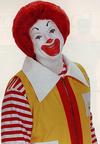Brand Journalism vs. Positioning

According to Larry Light, here is the definition of Brand Journalism:
“Brand Journalism is a chronicle of the varied things that happen in our brand world, throughout our day, throughout the years. Our brand means different things to different people. It does not have one brand position. It is positioned differently in the minds of kids, teens, young adults, parents and seniors. It is positioned differently at breakfast, lunch, dinner, snack, weekday, weekend, with kids or on a business trip.
“Brand Journalism allows us to be a witness to the multi-faceted aspects of a brand story. No one communication alone tells the whole brand story.
“Each communication provides a different insight into our brand. It all adds up to a McDonald’s journalistic brand chronicle.”
On the other hand here is the definition of Positioning, according to Al Ries:
“Positioning is not what you do to the product; it’s what you do to the mind of the prospect. It’s how you differentiate your brand in the mind. Positioning compensates for our overcommunicated society by using an oversimplified message to cut through the clutter and get into the mind. Positioning focuses on the perceptions of the prospect not on the reality of the brand.”
McDonald’s is a powerful brand. It pioneered the hamburger and fast-food categories. As the leader and the first brand in the mind, it became an American icon. Recently, however, the brand has lost its way. Why? Because they were no longer focusing on the core of what McDonald’s stands for. Because they were chasing breakfast, chicken, pizza, salads, adults (remember the Arch Deluxe?), coffee (McCafe, anyone?), hotels (Golden Arch hotel in Switzerland) and a whole host of other projects.
You don’t need an expensive research study to tell you what the McDonald’s brand stands for in the mind. McDonald’s equals kids, Ronald McDonald, happy meals, playgrounds, hamburgers, cheeseburgers and French fries. It all adds up to a paradise for kiddies 2 years to 8 years of age. Yes, other people also eat at McDonald’s, including the unpaid chauffeur of a headstrong three-year-old. But the core of McDonald’s market is families with kids.
The notion that McDonald’s should abandon the positioning philosophy and instead adopt a brand journalism approach is lunacy. Brand journalism is just another name for an approach that has been tried and has failed many times before. It is the everybody trap. Brand journalism attempts to make a brand appeal to everybody by using many different brand messages.
Brands that try to appeal to everyone end up appealing to no one.
What is a Chevrolet? It’s a cheap, expensive, large, small, automobile or truck. In essence, Chevrolet has lost its meaning. People recognize the brand but it has no position in the consumer’s mind. “An American Revolution,” Chevrolet’s recent slogan has not resonated with consumers.
“I’m lovin’ it” is McDonald’s theme and the core of Larry Light’s brand journalism strategy. I’m lovin’ it? What does that mean? In fact most customers have not been lovin’ McDonald’s for quite some time.. Sure, sales are up this year, but they have been stagnant for years.
Larry is suggesting that brands should not stand for anything. But if you look at some of the most powerful brands in the world, they stand for singular ideas in the mind:
– Starbucks: European-style coffee house
– BMW: driving
– Volvo: safety
– Subway: healthy sandwiches
– Cialis: the weekend drug
– Cold Stone Creamery: customized ice cream
– Ikea: Knock-down furniture
– Silk: soy milk
– Red Bull: Energy drink
– Under Armour: athletic underwear
Some brands stand for a category in the mind. Like Red Bull and the energy drink category. The best way to get into the mind is to be first in a new category. Under Armour got into the mind by pioneering the athletic underwear category. They invented it, they are the leaders and they own the position in the mind.
So what should McDonald’s do? They should not try and make the brand appeal to everybody. No one brand appeals to everyone. As consumers grow older, their brand preferences change. Think about the brands people might choose over their lifetime:
When you are young you might like McDonald’s hamburgers. As a teenager you might hangout at Wendy’s. After college you will probably take your date to Outback Steakhouse. After a promotion at work you might go to Ruth’s Chris. Then you get married, have kids and get dragged right back to McDonald’s.
The same is true in almost any mature product category. Your first car might be an inexpensive Saturn. Then you get a promotion and buy a BMW. After you get married and have kids you buy a Volvo. When you get divorced, the wife gets the kids, the house and the Volvo and you buy a Ferrari. You don’t want to buy an expensive Saturn sports car.
Brands help define who we are. We select our brands based on their position in our minds and whether they match how we feel about ourselves. When a brand no longer stands for something, it loses its power.
A brand journalism approach will not succeed in building a strong brand. McDonald’s needs to focus on hamburgers and kids. They need to remember that brand perception is a brand’s reality. Management has done a good job in cleaning up the stores and simplifying the menu. Now marketing has to sell the brand position.
McDonald’s is heaven for kids and their parents who “deserve a break today.”
 ?>
?>